You are here
How to Prevent and Treat Achilles Tendonitis
 As you age, all of your ligaments and tendons become more susceptible to injury. This is just a fact of life. Once you stop growing, you start degenerating; all you can control is the rate at which you degenerate.
As you age, all of your ligaments and tendons become more susceptible to injury. This is just a fact of life. Once you stop growing, you start degenerating; all you can control is the rate at which you degenerate.
One of the most effective ways to slow down the rate at which you experience degeneration is to regularly stretch your muscles and tendons. Stretching these tissues helps prevent scar tissue buildup and promotes healthy exchange of nutrients and waste products via steady blood circulation.
This is especially true of your weight-bearing muscles and tendons, tissues that you use during most of your waking hours.
Your Achilles tendon is the rope-like tendon that attaches your calf muscles to your heel bone. Whenever you move on your feet, your Achilles tendons are under constant load. In fact, even when you are standing still, your Achilles tendon needs to be taut to prevent you from toppling over.
So it should come as no surprise that Achilles tendonitis and overt tears of the Achilles tendon are common injuries among active and inactive people over 50 years of age.
I strongly feel that risk of Achilles tendonitis and partial or complete tears can be minimized through a regular program of stretching and deep tissue work.
As mentioned above, your Achilles tendon serves to attach your calf muscles to your heel bone. Your calf muscles consist of two major muscle bellies: higher up, you have your gastrocnemius, and lower down, you have a dense, flatter muscle called your soleus. Your gastrocnemius and soleus join together to form your Achilles tendon.
Beneath your gastrocnemius and soleus, more towards the outer half of the back of your lower leg, you have three more muscles called your flexor hallucis longus, flexor digitorum longus, and tibialis posterior. These secondary calf muscles don't join your Achilles tendon, but these muscles function hand in hand with your gastrocnemius and soleus muscles.
When these muscles are tight from overuse and lack of regular stretching, your Achilles tendon experiences constant, unnecessary pull, which predisposes it to inflammation and increased risk of tearing.
So whether you're looking to treat existing Achilles tendonitis or simply to prevent it, you stand to benefit a great deal from stretching and doing pressure work to this area daily. Working on your soleus in particular is a highly effective way of keeping your Achilles tendon healthy.
To stretch your gastrocnemius (your upper calf region), stand near a wall, stabilize your upper body by pressing your hands against the wall, maintain balance of your lower extremities by keeping one leg up in front of you with your knee bent, and keeping your target leg back behind you, knee straight, and with your heel on the ground.
Here's a picture of what this looks like:
Keep your lower back and abdominal region strong and upright, and work to keep your back knee straight and your heel pressed into the ground. You should feel a nice stretch through your upper calf region and possibly even your Achilles tendon.
To stretch your soleus muscle, maintain this same position, but add a slight bend of your back knee while keeping your back heel on the ground or close to it. Bending your back knee just a smidge should transfer the stretch you feel from your upper calf to your lower calf.
As with all stretches, strive to remember two principles:
-
Hold for 30 seconds at a time or as long as is comfortable, then switch to the other side of your body.
-
Maintain steady breathing as you hold your stretches.
Deep pressure work to this area can further promote healthy muscles and tendons via healthy blood circulation and optimal exchange of fluids and nutrients.
This can be as simple as feeling for and kneading out tender areas as you're sitting comfortably, or a purposeful program of applying controlled pressure to the entire posterior leg compartment with a hand-held roller, as shown below:
As you're rolling, you can shift the angle of your roller to hit inner and outer portions of the muscle bellies that you're working on.
If you don't have a hand-held roller to do this type of soft tissue stripping, a rolling pin from your kitchen should work just fine. The hand-held roller that I like to use can be found here:
If you want to takes things even further, you can have a family member, friend, or a health practitioner work on all of the muscles that surround your Achilles tendon. The advantage to having someone do this work on you is that you can fully relax, enabling fuller access to your muscles, fascia, and even nerves and blood vessels in the area. Also, an experienced practitioner can apply pressure while moving your ankle joint in a way that lengthens and shortens the target tissues, which further enhances the effectiveness of the pressure work.
Here's a brief video clip that shows how I like to lengthen muscles of the posterior leg compartment when looking to treat or prevent Achilles tendonitis:
Addendum - September 2, 2014
Another way to keep your gastrocnemius and soleus muscles healthy is to foam roll your calves.
Here are some pictures that show how to rotate your hip to roll your soleus muscle (the one closer to your achilles tendon) width-wise:
If you find that you can use more pressure on your soleus muscle, you can put the sole of your opposite leg on your shin and lift your pelvis off the floor by supporting yourself on your hands - this position will put all of your body weight on your hands and the soleus muscle being worked on. It requires some agility, but rotating your hip and rolling the length of your soleus while in this position can do wonders for flushing your tissues with healthy blood circulation.
You can repeat the same internal and external hip rotating while loading your gastrocnemius muscle on the foam roller. Here are a few pictures to illustrate:
You can also roll length-wise on the foam roller - that is, roll along the length of your calf muscles from your ankle to the back of your knee. Try this along the middle, outer, and inner portions of your calf muscles to hit the many bellies that line this compartment of your leg.
The following video clip shows how to roll your calf muscles length-wise and width-wise:
Don't forget: if you don't have access to a foam roller, you can always use a rolling pin. If a rolling pin is too firm at first, you can put a towel or blanket over it to provide a little cushion.
Rolling your calves in this fashion can also help promote healthy blood circulation throughout your lower extremities via stimulation of the blood vessels and nerves that supply your lower half. For more information on how to use a foam roller to improve and maintain blood circulation to your legs and feet, have a look at the following post:
How to Improve Blood Circulation in Your Legs
***
Even if you don't have problems with your Achilles tendons, I encourage you to give some of these tips a try. They don't cost a thing but your time and some energy, and I strongly feel that such stretches and pressure work can go a long way towards keeping your legs and ankles healthy at any age. I don't walk all of my talk 24/7, but Margaret will confirm that I do this work on myself daily. Call me a huge believer in this facet of wellness care.
If you don't have a foam roller and are looking to invest in one that offers a blend of comfort, durability, and ideal density to provide therapeutic rolling of your muscles and ligaments, please feel free to have a look at the one that I had custom made for our clients here:
For a DVD that presents still photos and video clips that illustrate how to take your body through all of the major stretches and foam rolling exercises you can do to keep your body as healthy as your genetics will allow, have a look here:
Stretching and Foam Rolling DVD, by Sharon Lee and Dr. Ben Kim
Join more than 80,000 readers worldwide who receive Dr. Ben Kim's free newsletter
Receive simple suggestions to measurably improve your health and mobility, plus alerts on specials and giveaways at our catalogue
Please Rate This
Highest Rated | Related Posts | ||







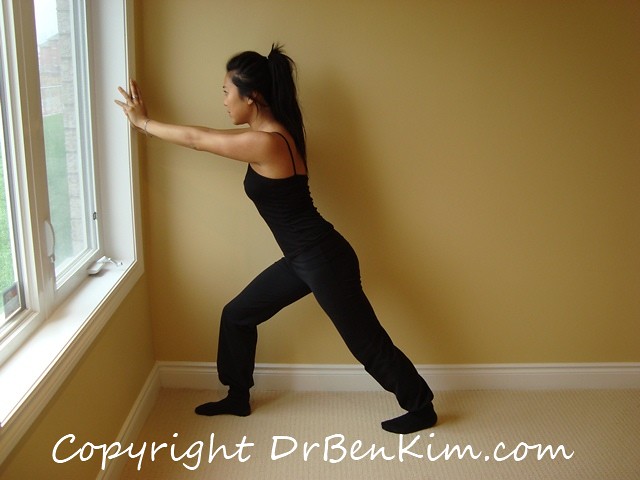
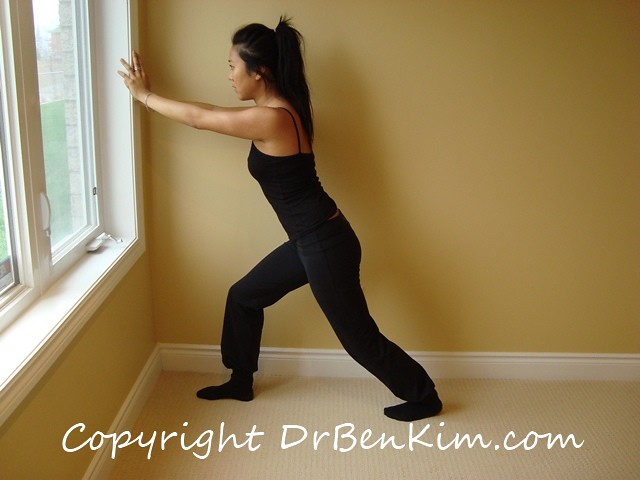
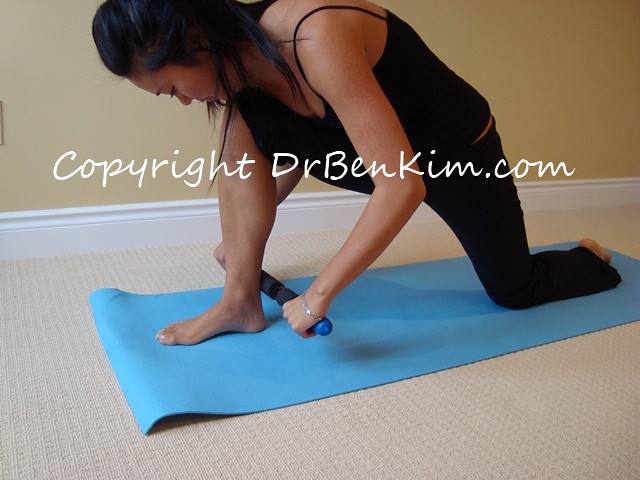
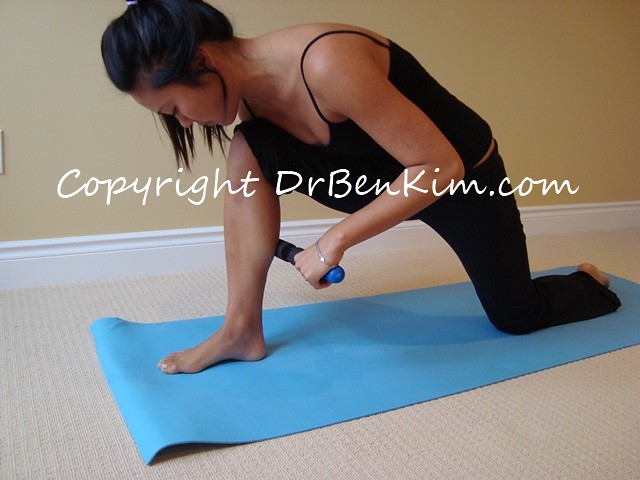
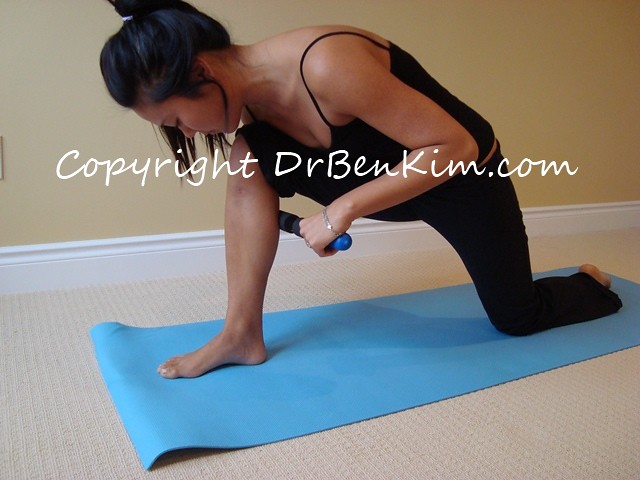
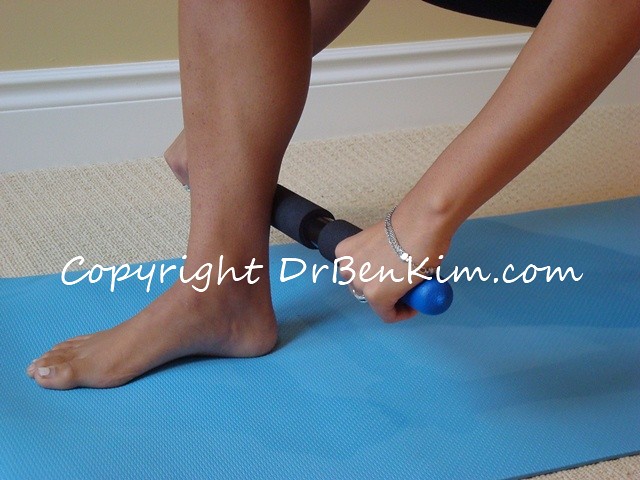
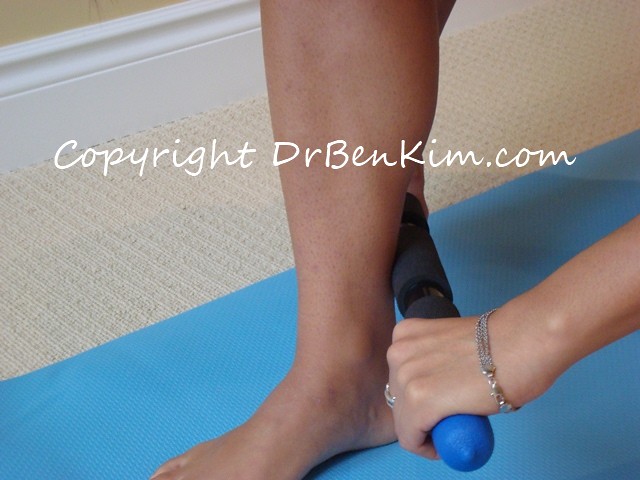
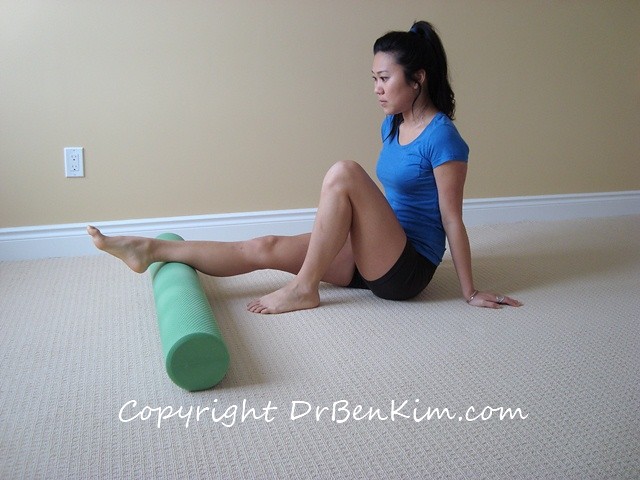
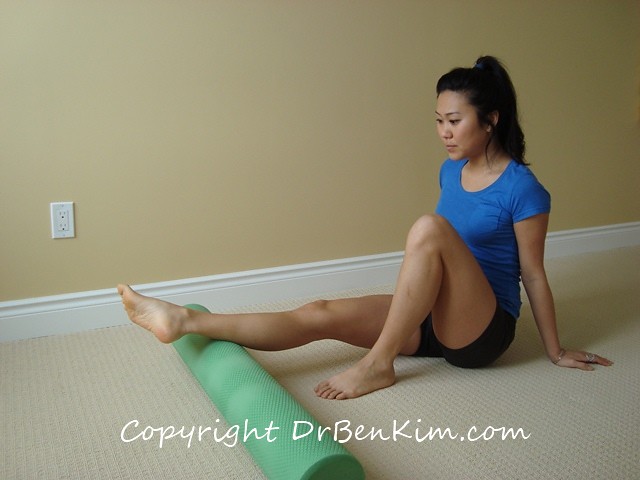
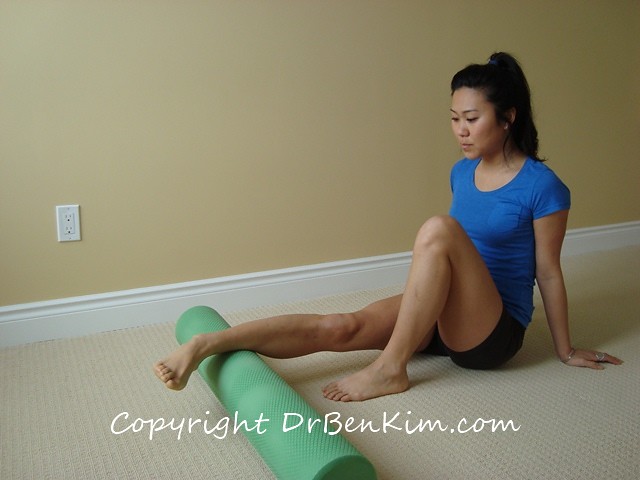

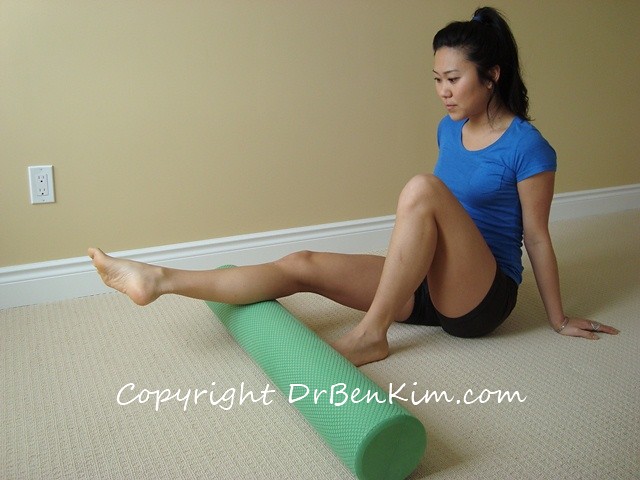
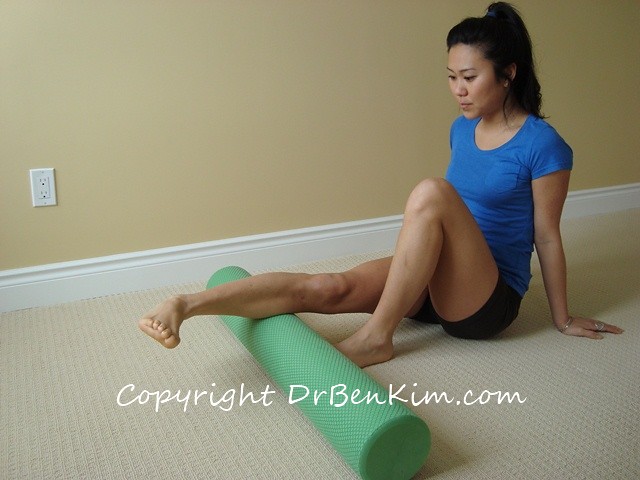




Comments
Rolling Calves
Great exercise, great result. Cured all my foot and knee pains with the first try. Thank you Dr. Kim.
Be careful with soleus muscle stretch.
I'd recommend exercising extreme caution when doing the second stretch (soleus muscle). I read this article last March, and while attempting the soleus stretch, I felt an intense pain, as if I pulled something in my ankle or lower calf. I've pulled a lot of muscles in my life, all of which healed quickly, but this was my first time experiencing this particular injury. Five months later, there are times when I can still feel the pain. I will never be attempting that stretch again. The basic calf stretch works fine for me.